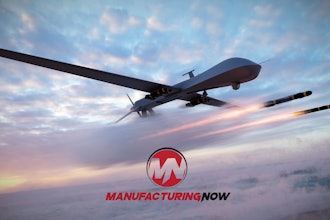Disasters come in many shapes and all sizes, which is why those who prepare for them prefer the term “emergency.” What may be a disaster for one organization may be a major inconvenience for another, but both groups will still treat them as emergencies.
In the context of the business world, the Federal Emergency Management Agency defines an emergency as “any unplanned event that can cause deaths or significant injuries to employees, customers or the public; or that can shut down your business, disrupt operations, cause physical or environmental damage, or threaten the facility’s financial standing or public image.”
Rather a broad definition, and thankfully emergencies do not happen very often. However, they DO happen, often at the most inconvenient times.
Those who have the responsibility of dealing with the emergency, the subsequent clean-up, and transition back to normal operations are always faced with sleep deprivation, time away from home, and nearly unbearable stress. Camping out in the parking lot without plumbing, eating Meals Ready To Eat (MRE’s), and working 16 hours a day is not a project many would willingly accept.
If only there had been more preparation leading up to the emergency, perhaps the recovery would proceed more smoothly and with far less stress.
Surprisingly, some companies do not use the lessons of others to prepare for their own potential emergency situations. The reasons are similar to why more people don’t get annual physicals, or check their tire pressure:
• If I ignore it, maybe it’ll go away
• Bad stuff happens to other people
• If it ain’t broke, don’t fix it
• If I ignore it, maybe it’ll go away
• Bad stuff happens to other people
• If it ain’t broke, don’t fix it
In an industrial environment, these can be translated as:
• We don’t have the time to worry about that
• We don’t have the budget to devote to something that may never happen
• We already have insurance
• We don’t have the time to worry about that
• We don’t have the budget to devote to something that may never happen
• We already have insurance
Everyone recognizes that ignoring a problem is no substitute for dealing with it, but the insurance comment raises some interesting points.
Developing an Emergency Preparedness, Response, and Recovery (EPRR) plan is like insurance, in that it is planning for a disastrous event that you hope will never occur. On the other hand, it is a smart thing to do, and will cost less than any insurance policy. It’s also important to note that an EPRR plan does not compete in any way with your insurer or insurance, but can assist tremendously in preparing a claim.
Your insurance company probably sends a loss prevention engineer to your site periodically, who concentrates on issues that may lead to fire, flood, boiler explosions, and the like. Those efforts are designed to save you from catastrophic losses, and to save the insurance company from exposure to unnecessary risk.
An EPRR plan will be more comprehensive than the focused efforts of the loss prevention engineers, and will prepare you to deal with emergencies in a more orderly fashion.
If you have industrial insurance and you incur a loss, there are two categories your insurer will likely be interested in: Property Damage (PD) and Business Interruption (BI). Both of these categories can add up quickly.
After a loss, you will need to justify the Property Damage claim for the insurer, and you will have to minimize the length of time your business is interrupted. This too will need to be justified to the insurer.
In theory, if you suffer a loss, the insurer covers it (less a deductible) and you are back in business. In reality, the insurer will investigate your claim while you are desperately trying to recover. It is an agonizing process.
Clearly, the insurer would rather you did what you could to prevent or minimize the loss, and clearly it’s just good business for you to do the same, but hurricanes happen, and there is precious little you can do to stop them. However, you CAN have a plan in place, to mitigate losses, to minimize the chaos that follows an emergency, and to alleviate the accompanying stress that will be placed on you when you are tasked to deal with the emergency. And even though you have insurance to cover some of the loss in dollars, you will still be faced with the stress of the recovery operation.
Consider:
• What are your priorities following an emergency?
• Who will you call? Employees? First Responders? Federal Authorities? The Insurer?
• Who are your contractors? Will they be ready to assist you?
• What about replacement parts for the HVAC system, the computer system, the compressor, etc.
• Have the suppliers of goods or services been affected by the same emergency?
• What condition will your facility be in after an emergency? Can you even support a level of activity? Are the restrooms functioning? Is there food and water on site?
• What are your priorities following an emergency?
• Who will you call? Employees? First Responders? Federal Authorities? The Insurer?
• Who are your contractors? Will they be ready to assist you?
• What about replacement parts for the HVAC system, the computer system, the compressor, etc.
• Have the suppliers of goods or services been affected by the same emergency?
• What condition will your facility be in after an emergency? Can you even support a level of activity? Are the restrooms functioning? Is there food and water on site?
If your palms are sweating at this point, then you have an appreciation for the minimal level of planning that is required to deal effectively with an emergency.
There are three phases for dealing effectively with an emergency, and each one is critical to your success in managing such a crisis:
1. Preparation
2. Response
3. Recovery
1. Preparation
2. Response
3. Recovery
The minimum time required to prepare for an emergency is about six months prior to the event. This will give you some time to perform a vulnerability analysis, set up agreements with vendors and contractors, prepare a command post, and develop shut down procedures.
Executing an effective response depends to a large extent on how well you prepared, and how well you predicted what the emergency would be. Of course, this is not always the case, but having a plan in hand is better than reacting.
The recovery phase is the most time-consuming. Again, the key to minimizing the Business Interruption as well as your stress level is adequate planning.
The preparation of an Emergency Preparation Response and Recovery plan does not take the place of, nor conflict in any way with, the insurer’s Loss Prevention Engineering program; it supplements it.
Brian Silowash, P.E., is President of Innovative Design Engineering of America, LLC, a Pittsburgh-based engineering consulting firm specializing in facilities engineering, including Emergency Preparation, Response and Recovery Programs. He has been a consultant to insurance companies for a variety of losses in the U.S. and Asia.






















